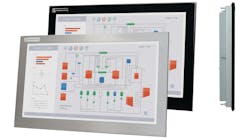How do industrial networks differ from commercial networks?
An industrial Ethernet network is primarily no different than a commercial IT Ethernet network. They both can present multiple communication protocols on the same cable. They both use routers, bridges and switches, and the devices typically use the same Ethernet chips and drivers in order to communicate.
The Advanced Research Projects Agency Network (ARPANet) was the first network employed for wide area networking. It was government-funded. Wide adoption of system networking started in the 1970s.
Get your subscription to Control Design’s daily newsletter.
NetWare was the first networking software produced by Novell. It had the ability to bridge disparate cabling topologies using software servers, so it could easily match the needed cabling topologies back in the 1970s). Star, trunkline/dropline and token ring were the most common at the time, where the trunkline/dropline topology would be the best solution for a plant floor. The cable used typically was coaxial (coax).
Attached resource computer network (ARCNet) data-link technology was one of the first networks employed on the plant floor. Many installations ran Digital Equipment Corporation (DEC) virtual memory-based system (VMS) or programmed/programmable data processor (PDP) mini-computers networked together from a server room to the floor. NetWare was used along with DEC’s own DECnet. Remembering that in the early days of networking, vendors of programmable logic controllers (PLCs) typically had their own networking infrastructures such as Data Highway (DH) and DH+. RS-422/485 was also employed.
In 1981, the personal computer (PC) was introduced, which ran on an Intel-based motherboard (80286/386). Apple had been around for a while but was more for the hobbyist as such. The main difference here is that the mini-computer infrastructure used a main server, and terminals ran software from the server, but the PC could run computer programs on its own. It took some time for this methodology to migrate into industry, and it became very clear that networking of PCs together was a necessity.
Being able to run programs from a server was available, but having an operation-specific PC on the plant floor was very attractive.
The engineering that this development spurred was gaining maximum velocity. Software programs were being released almost daily. And in 1984 the Ethernet data link infrastructure was born. Using a network protocol such as transmission control protocol/Internet protocol (TCP/IP) over a single twisted pair was cost-effective and easy to implement.
Embedded solutions for human-machine interface (HMI) based on vendor protocols were introduced. UNIX-based system that had been employed were losing ground to the DOS-based stand-alone PCs. DEC VMS/PDP solutions were facing the same fate. Industrial hardware, such as the IBM 7531 industrial PC, came into view since commercial hardware was not tough enough for the plant floor.
Coaxial systems were first used for networking since coax cable was deemed to be more reliable and easier to maintain. Since it had a shield along the complete length of the cable, its noise immunity was acceptable for the plant floor.
When the twisted pair burst onto the scene, it took some time to migrate to the factory floor. One of the main reasons was that the PC networking capabilities were not as widespread as they are now. In 1989, when Microsoft introduced Windows 3.11—Windows with networking—and industrial vendors supported Windows and standard Ethernet drivers, as they say, the rest is history.
The IT department held a firm grip on what went on the plant floor because they were computers. Data General produced a laptop in the late 1980s. An automotive user bought them because it was called a programming device. If it was called a computer, then the IT department would get involved.
Routers and switches were able to be put onto the factory floor. Ruggedized hardware was needed due to the power blips, noise, vibration and the like. The industrial Ethernet was coined and the explosion of software solutions and hardware was prolific. Supervisory control and data acquisition (SCADA) systems, local PC-based HMI and engineering workstations networked on the floor became the norm.
Being able to gain easy access to data over the factory floor from one spot was liberating. PLCs started to embrace the Ethernet way of doing things and vendor-specific protocols and hardware faded into the sunset.
Interoperability between systems became a reality. Real-time data was a reality on the factory floor. Because of the networking, solutions to problems could be easily identified and resolved.
The advent of the industrial network and Ethernet has allowed machine builders and users alike to reduce costs of implementation and maintenance and frankly create better solutions for the people they serve.
Is industrial Ethernet different than commercial Ethernet? By protocols, yes. By hardware, no, albeit the industrial networking hardware is probably more robust than the commercial network. It has to be. You can’t just reboot.





